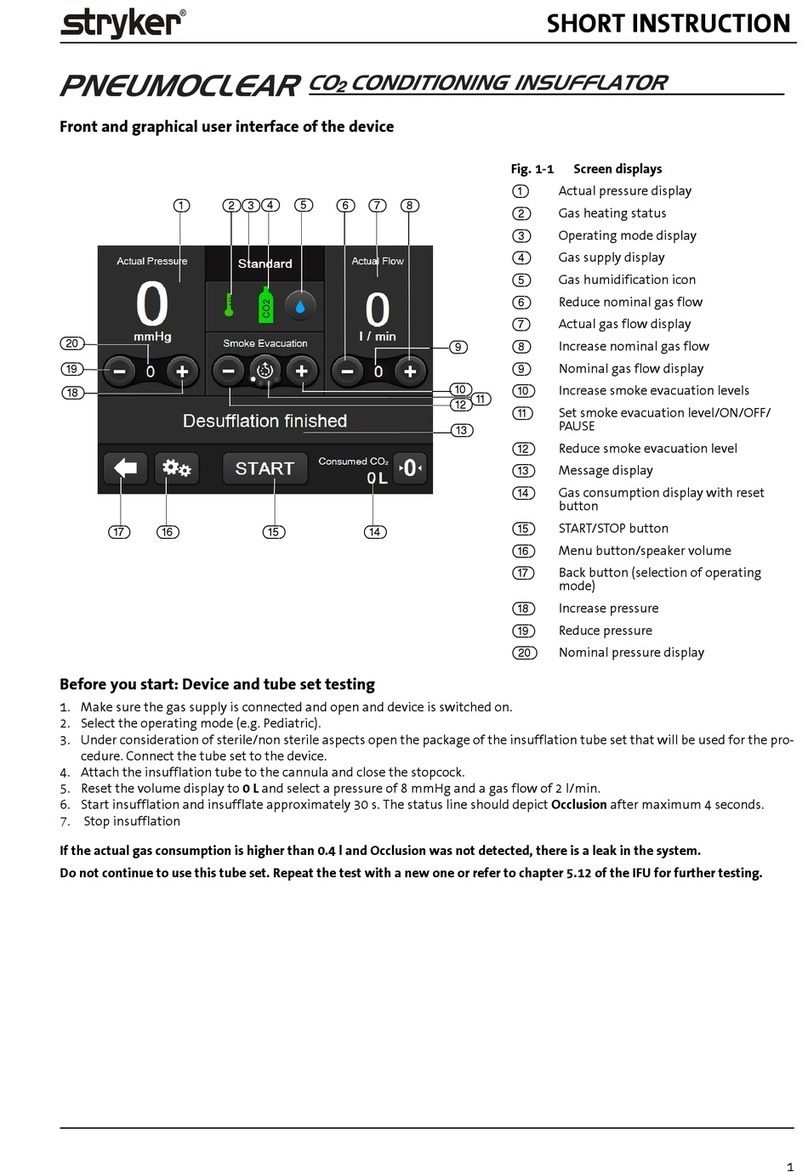
v
Table of Contents
1 Important User Notes ...............................................................................................................................................................................................7
2 Safety Information..................................................................................................................................................................................................... 8
3 General Information..................................................................................................................................................................................................9
3.1 Device Description...........................................................................................................................................................................................9
3.2 Intended Use and Contraindications .........................................................................................................................................................9
3.2.1 Intended Use ................................................................................................................................................................................................ 9
3.2.2 Contraindications .....................................................................................................................................................................................10
3.3 Warnings......................................................................................................................................................................................................... 10
3.3.1 General Warnings CO2 Insufflation ....................................................................................................................................................10
3.3.2 Warnings Standard and High Flow/Bariatric Operating Mode...................................................................................................14
3.3.3 Warnings Pediatric Operating Mode ..................................................................................................................................................16
3.3.4 Warnings Vessel Harvest Operating Mode .......................................................................................................................................17
3.3.5 Warnings TAMIS Operation Mode.......................................................................................................................................................18
3.4 General Precautions..................................................................................................................................................................................... 19
4 Initial Device Setup ..................................................................................................................................................................................................21
4.1 Device Setup and Connection ................................................................................................................................................................... 21
4.2 Front of the Device ....................................................................................................................................................................................... 22
4.3 Rear of the Device......................................................................................................................................................................................... 23
4.4 Gas Connection ............................................................................................................................................................................................. 23
4.4.1 Connecting a Gas Bottle..........................................................................................................................................................................24
4.4.2 Connecting to Central Gas Supply .......................................................................................................................................................25
4.5 Gas Supply ...................................................................................................................................................................................................... 25
4.6 Switching Device On.................................................................................................................................................................................... 26
4.7 Switching Device Off ................................................................................................................................................................................... 26
5 Operating the Device - General............................................................................................................................................................................28
5.1 Monitor with Touch Screen ....................................................................................................................................................................... 28
5.2 Insufflation Tube Sets.................................................................................................................................................................................. 28
5.3 Connecting an Insufflation Tube Set ......................................................................................................................................................29
5.4 Using Gas Heating........................................................................................................................................................................................ 30
5.5 Using the Smoke Evacuation Function................................................................................................................................................... 31
5.6 Use of Insufflation Gas Humidification Function................................................................................................................................ 33
5.7 Using Device Control ................................................................................................................................................................................... 35
5.8 Unlocking Operating Modes...................................................................................................................................................................... 36
5.9 Displaying/Selecting Insufflation Operating Mode............................................................................................................................ 36
5.10 Setting the Nominal Pressure - All Operating Modes ........................................................................................................................ 36
5.11 Setting the Nominal Flow - All Operating Modes ...............................................................................................................................37
5.12 Running Function Tests before Device Use........................................................................................................................................... 37
5.13 Gas Consumption Display .......................................................................................................................................................................... 39
5.14 Starting/Stopping Insufflation ................................................................................................................................................................. 39
5.15 Desufflation.................................................................................................................................................................................................... 40
6 Operating Modes of the PNEUMOCLEAR™ Insufflator ..................................................................................................................................41
6.1 Standard Operating Mode ......................................................................................................................................................................... 41
6.2 High Flow/Bariatric Operating Mode ..................................................................................................................................................... 43
6.3 Pediatric Operating Mode.......................................................................................................................................................................... 46
6.4 Advanced Flow Operating Mode.............................................................................................................................................................. 48
6.5 Vessel Harvest Operating Mode............................................................................................................................................................... 48
6.6 TAMIS Operating Mode............................................................................................................................................................................... 50
7 Menu (Overview) ......................................................................................................................................................................................................51
8 Safety Functions........................................................................................................................................................................................................53
8.1 Automatic Venting System........................................................................................................................................................................ 53
8.2 Occlusion......................................................................................................................................................................................................... 53
8.3 Contamination .............................................................................................................................................................................................. 54
8.4 Leakage Detection ........................................................................................................................................................................................ 54
9 Care and Maintenance............................................................................................................................................................................................55
9.1 Cleaning the Device ..................................................................................................................................................................................... 55
9.2 Maintenance Intervals ................................................................................................................................................................................55
9.3 Maintenance by Authorized Service Technician..................................................................................................................................55
9.4 Replacing the Fuse........................................................................................................................................................................................ 56
en




























